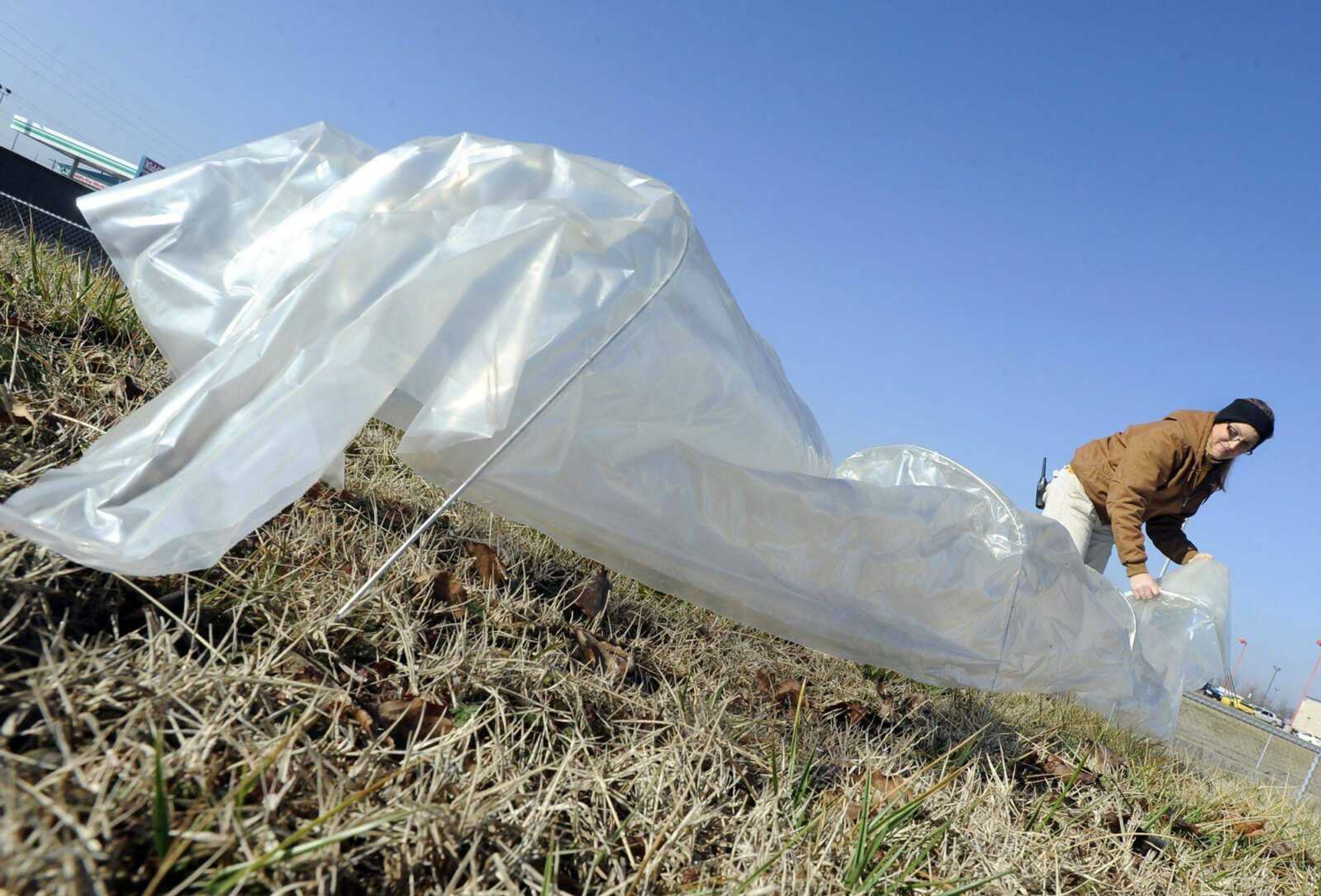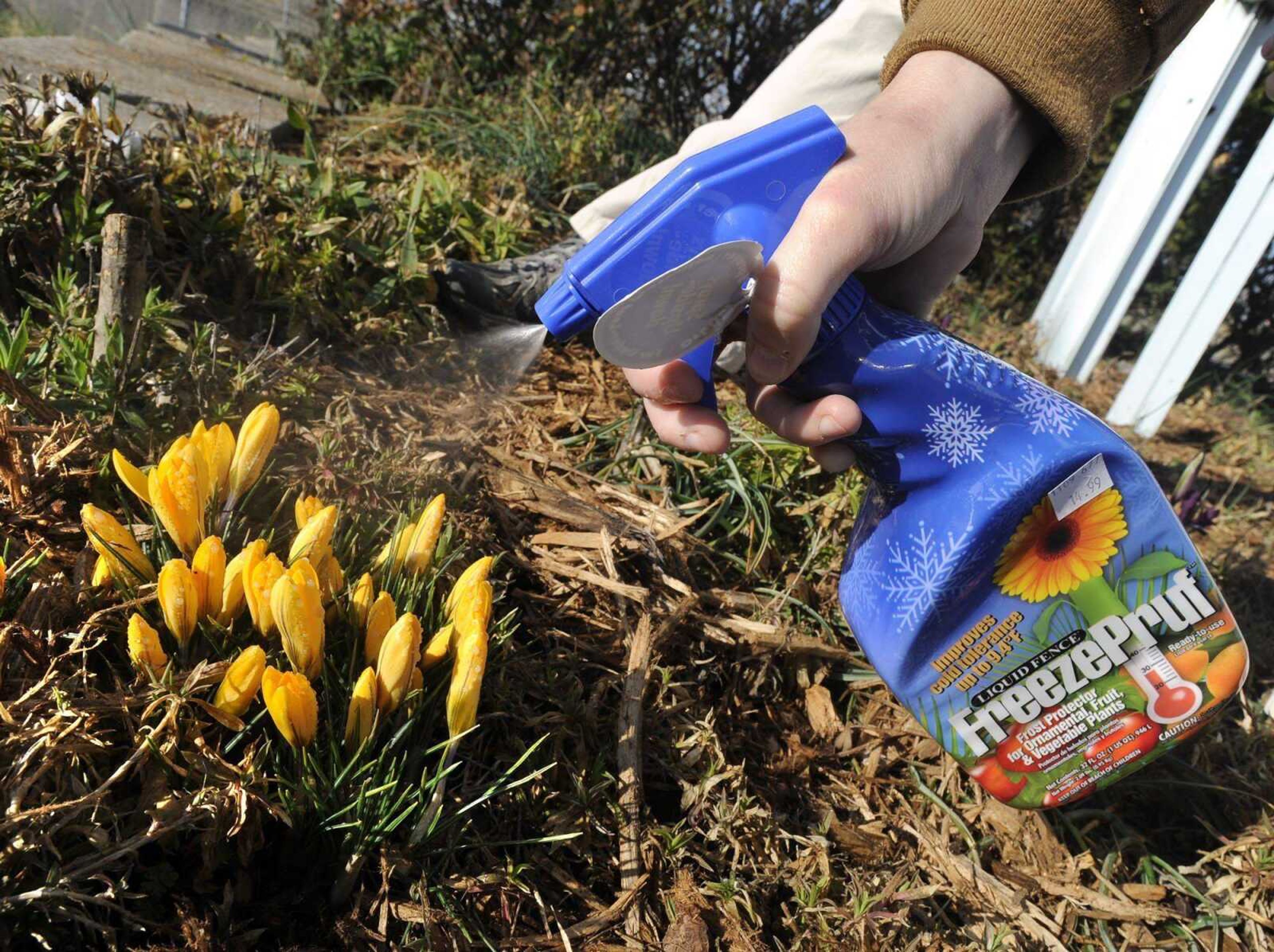Ask Dr. Grow: Saving early blooms from a deep freeze
The warm January weather has created quite a stir among gardeners. In conversation after conversation I hear about crocuses that are blooming, fruit trees that have swelling buds and daffodils that have leaves about four inches above the soil surface...
The warm January weather has created quite a stir among gardeners. In conversation after conversation I hear about crocuses that are blooming, fruit trees that have swelling buds and daffodils that have leaves about four inches above the soil surface.
"How am I going to protect the plants in my garden and landscape that have already broken dormancy, are budding, and are blooming if we get a real cold snap after all of this unseasonable winter weather?" This seems to be the $64 question that every gardener is asking right now.
Most of the plants that are beginning to break dormancy are designed to bloom early in the season. They are able to withstand the vagaries of Mother Nature. But if you are still concerned, I have three suggestions to protect your plants from that impending cold snap everyone assumes that we are going to have. You may want to try one or more of these suggestions.
First, cover your succulent plants with a frost blanket. The blanket is lightweight so it will not harm your plants. If you use a bed sheet or a regular blanket, the weight sometimes mashes and damages succulent foliage.
Unlike a regular blanket, the frost blanket allows light to filter through it. Therefore if you need to leave the blanket on your plants for several days, they will still get sunlight, a necessity even when temperatures are cold.

The second suggestion is to spray your tender plants with a compound called FreezePruf. This product needs to be sprayed on your plants about 24 hours before the cold snap to be effective. The effectiveness of the spray will last up to six weeks. So an application now may be all that is needed to get your plants through the last of this winter.
In a sense FreezePruf acts as an external plant antifreeze. The label suggests that it will protect plants for 9 degrees lower than the plant will be able to protect itself from low temperatures.
The third suggestion is to protect plants that are in rows, such as in vegetable gardens, with a product called Tunnel-Cover. Essentially this is a hoop frame work that straddles the row in your garden. You then drape greenhouse polyfilm over the framework. You now have a miniature greenhouse over your plants.
The Tunnel-Cover will use sunlight to heat up the soil under the polyfilm. The soil heat will then reradiate at night to provide heat for the plants growing under the film. If a bright, sunny, warm day occurs you may need to allow air to move through the tunnel so your succulent plants don't get sunburn.
Several inexperienced gardeners tell me that they will cover their plants with a sheet of plastic if it gets really cold. This works OK if you do not let the plastic sheeting touch the plants. Unfortunately, cold will travel right through plastic, and freezing of plant tissue occurs at the point where the plastic and plant tissue touch. This is the reason a framework is needed if you are going to protect your plants with plastic sheeting.
I hear all kinds of long-range weather forecasts, so I don't know whether we will have that late winter cold snap that everyone fears. But if we do, some of the suggestions listed above may just keep your succulent plants from getting damaged early in the 2012 growing season.
Send your gardening and landscape questions to Paul Schnare at P.O. Box 699, Cape Girardeau, MO 63702-0699 or by email to newssemissourian.com.
Connect with the Southeast Missourian Newsroom:
For corrections to this story or other insights for the editor, click here. To submit a letter to the editor, click here. To learn about the Southeast Missourian’s AI Policy, click here.











